In the figure shown,
(a) find the force of friction acting on the block.
(b) state whether the block will move or not. If yes then with what acceleration?
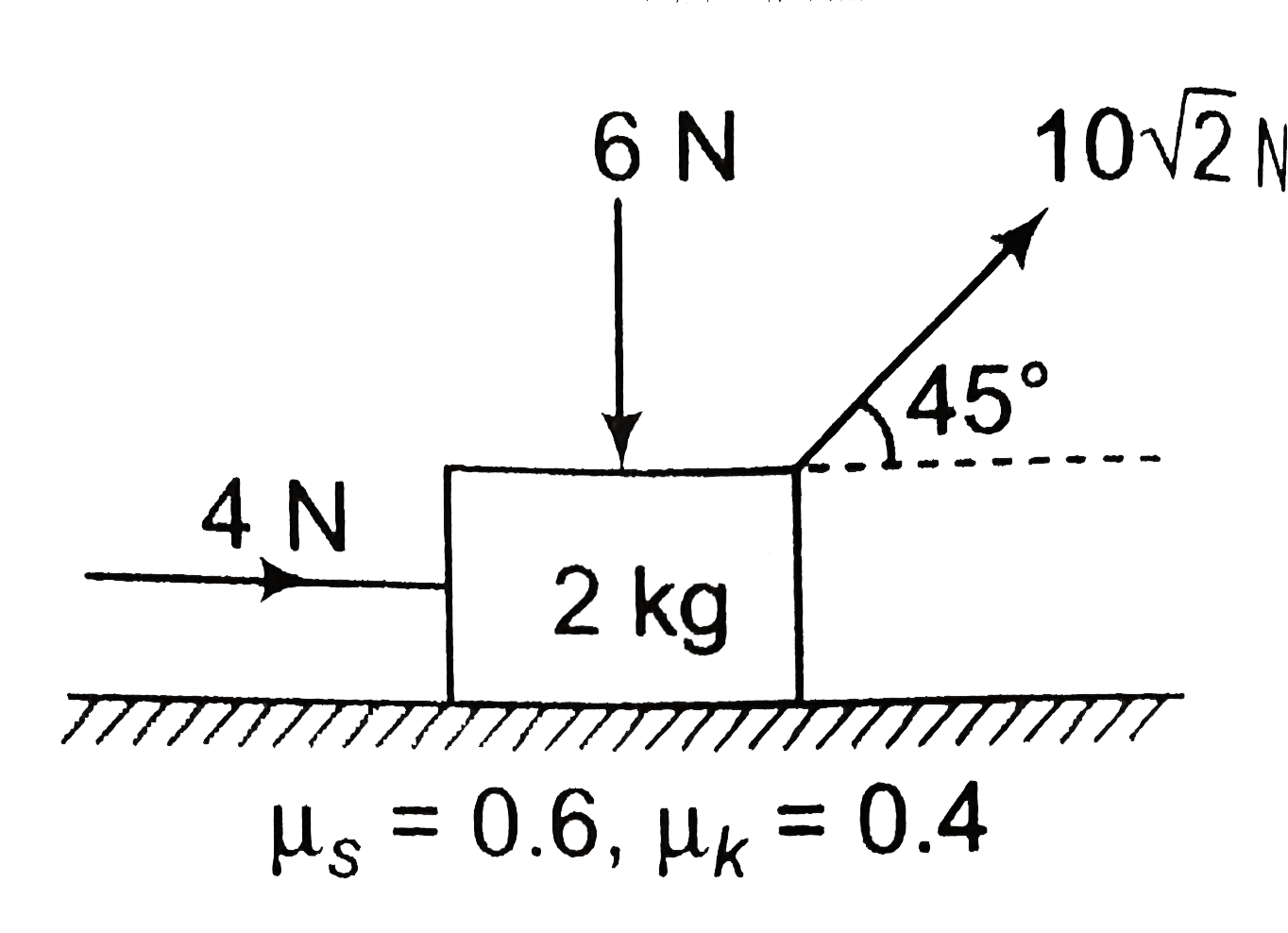
Resolving the force in vertical (perpendicular to the plan) direction (except friction)
Here R is the normal reation,
∑FY=0⇒R=26N
μsR=0.6×26=16.6N
μkR=0.4×26=10.4N
∑Fx=net driving forceF=14N
(a) Since, F≤μsR
∴ Force of friction f=F=14N
This friction will act in the opposite direction of F.
(b)Since, F≤μsR the block will not move.
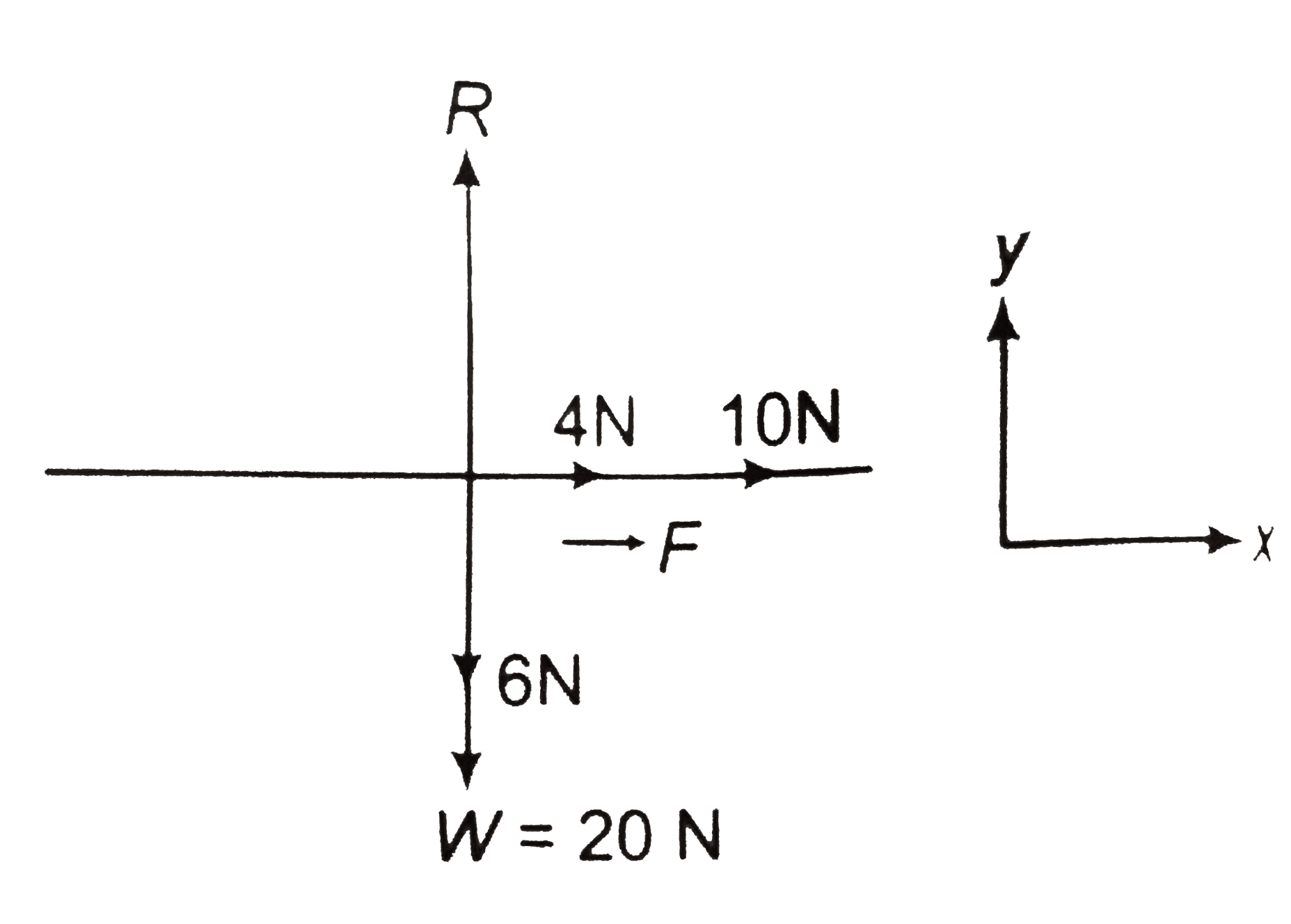
Similar Questions
Knowledge Check
As shown in the figure , the friction force acting on the block is
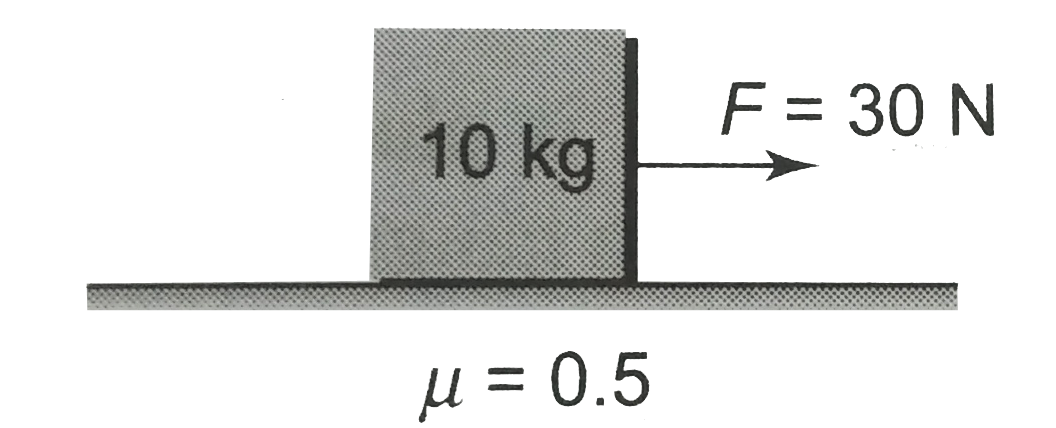 A50NB30NC20NDNone
A50NB30NC20NDNoneA force ¯¯¯F=ˆi+4ˆj acts on block shown. The force of friction acting on the block is :
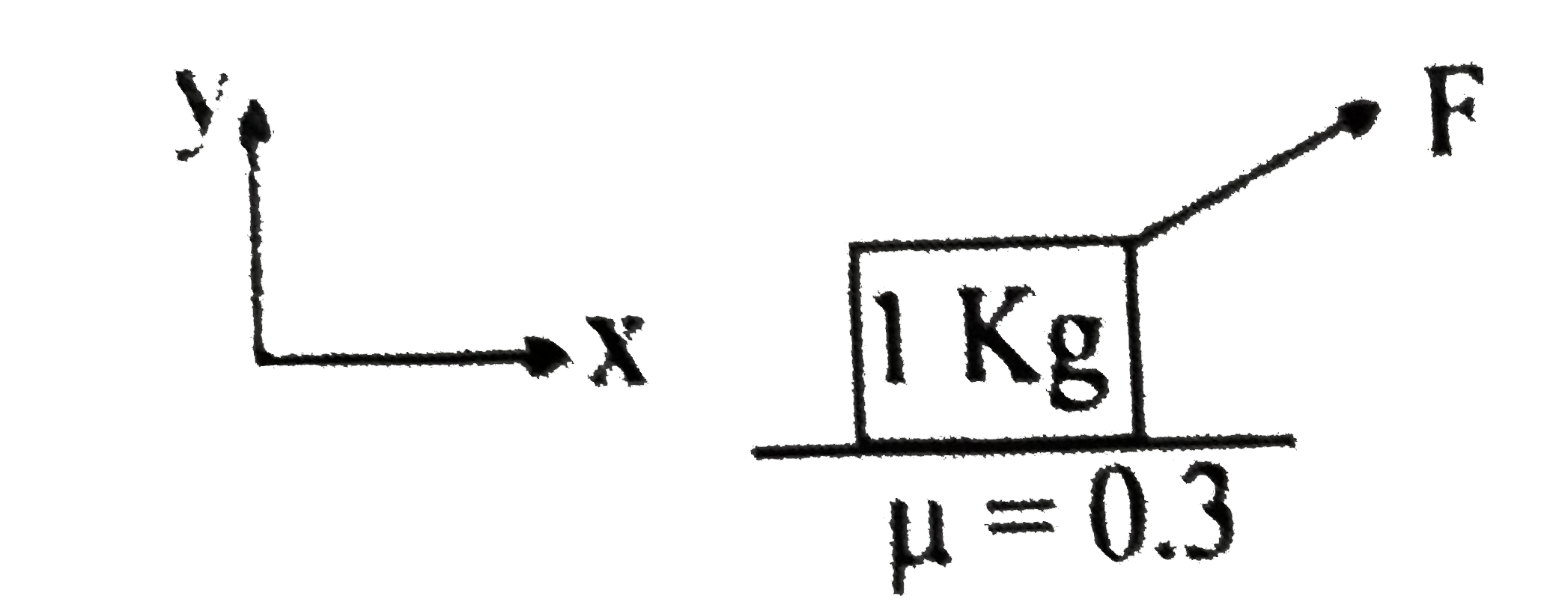 A−ˆiB−1.8ˆiC−2.4ˆiD−3ˆi
A−ˆiB−1.8ˆiC−2.4ˆiD−3ˆiIn the figure shown, there is no relative motion between the two blokcs. Force of friction acting on 1 kg block is
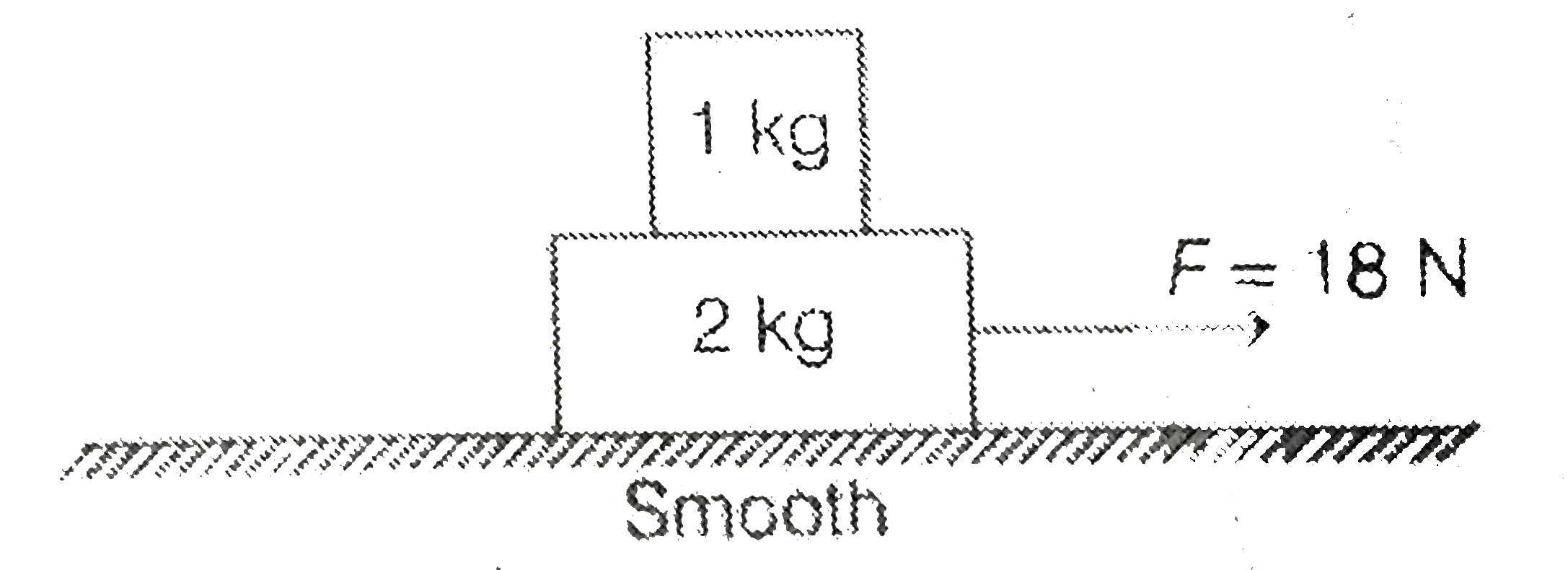 AzeroB3NC6ND4N
AzeroB3NC6ND4N
In the figure shown, find out acceleration of each block.
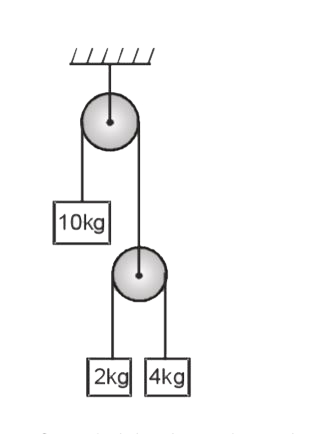
View SolutionFind the force of friction acting between both the blocks shown in the figure. u = .4 5 Kg F= 20 N 10 Kg
View SolutionIn the three figure shown, find acceleration of block and force of friction on it in each case.
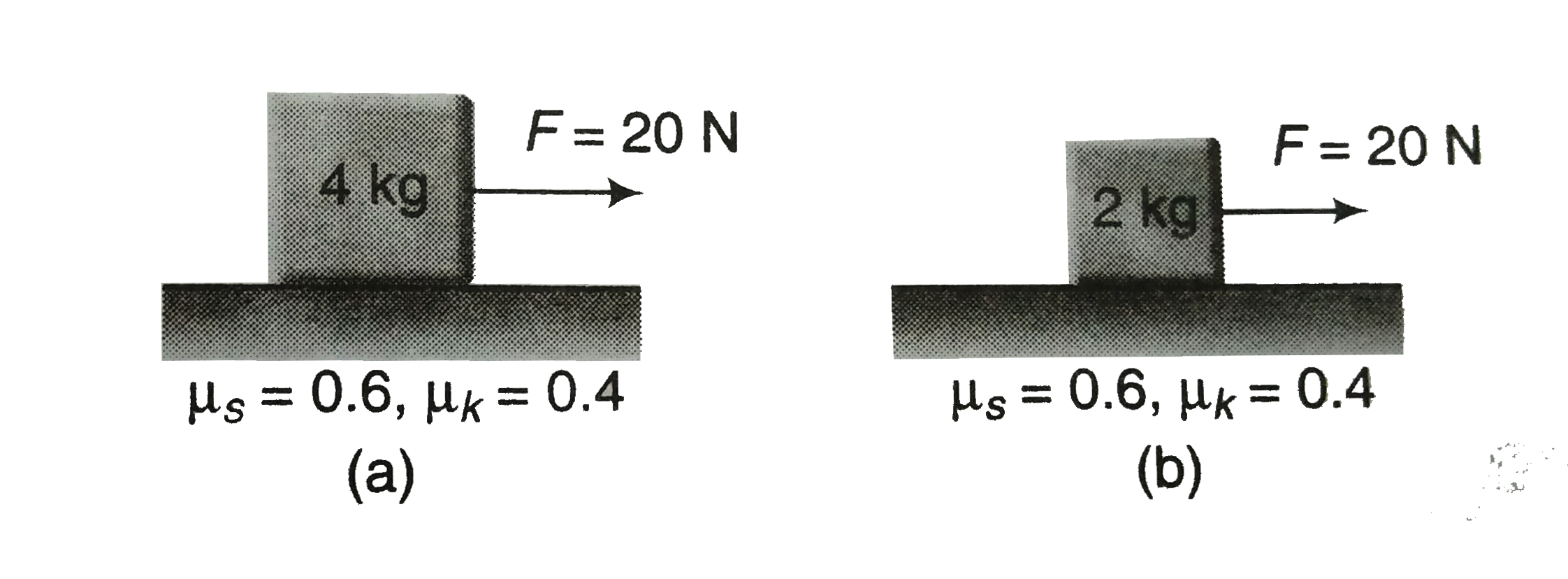
View SolutionBlock B of mass m has been placed on block A of mass 3 m as shown. Block A rests on a smooth horizontal table. F1 is the maximum horizontal force that can be applied on the block A such that there is no slipping between the blocks. Similarly, F2 is the maximum horizontal force that can be applied on the block B so that the two blocks move together without slipping on each other. When F1andF2 both are applied together as shown in figure.
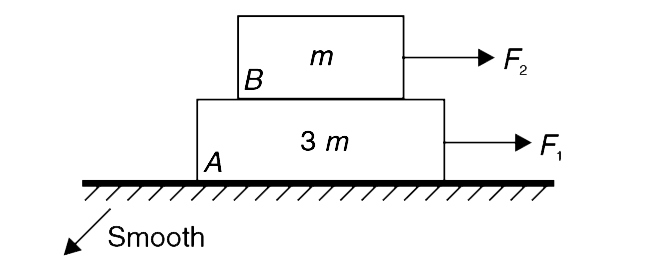
(a) Find the friction force acting between the blocks.
(b) Acceleration of the two blocks.
(c) If F2 is decreased a little, what will be direction of friction acting on B.
View SolutionFor the arrangement shown in the figure the coefficient of friction between the two blocks is μ. If both the blocks are identical and moving ,then the acceleration of each block is
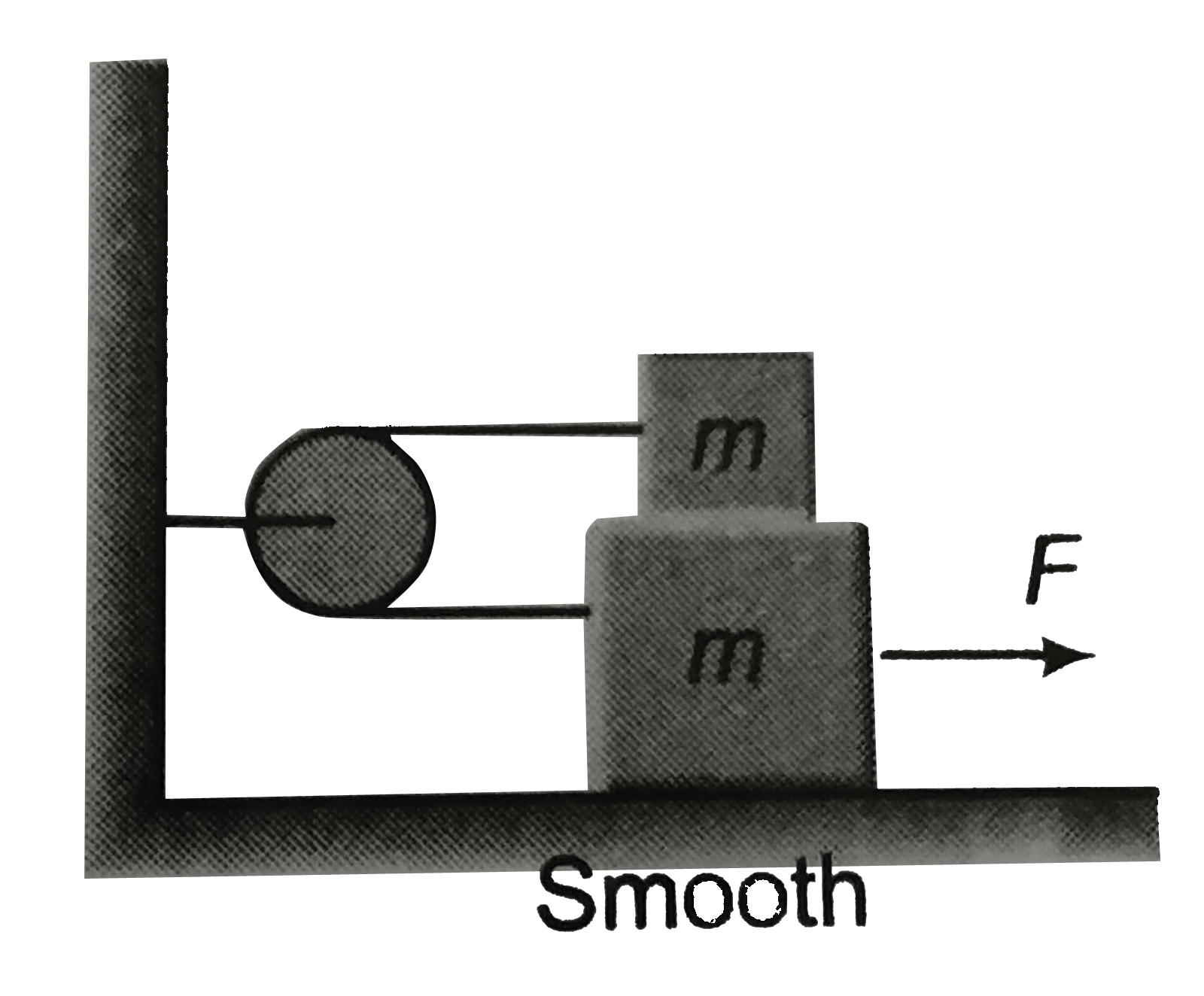
View Solution

